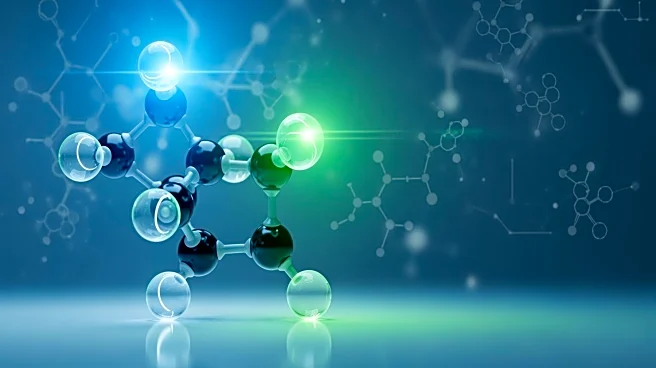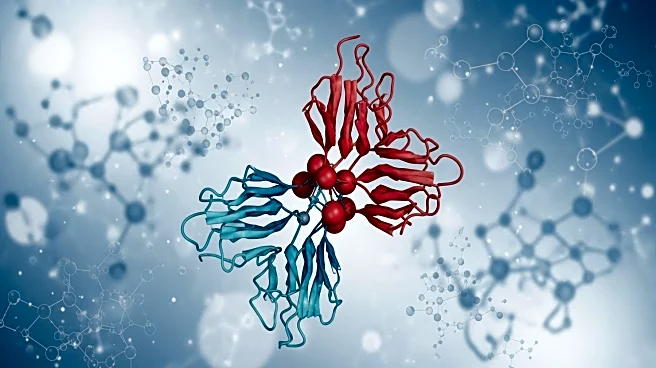What's Happening?
A recent study has identified the zinc-bound form of the natural product compound JBIR-141, derived from actinomycete, as a significant influencer of the mitotic phenotype in fission yeast. The research, conducted on the S149 strain, demonstrated that
JBIR-141 induces a 'wee cell' phenotype in S. pombe, suggesting its potential as a tool for studying cell cycle control mechanisms. The compound was purified and analyzed, revealing its ability to bind zinc ions, which may play a role in its bioactivity. The study also explored the compound's interaction with various deletion mutants, indicating that JBIR-141/Zn2+ might target specific cellular components involved in mitosis.
Why It's Important?
The findings have implications for the development of experimental tools in cell cycle research, particularly in understanding mitotic processes. JBIR-141's ability to bind zinc and influence cell cycle progression could lead to new insights into cellular regulation and potential therapeutic applications. The study highlights the importance of natural products in scientific research and their potential to uncover novel biological mechanisms. Researchers and pharmaceutical companies may benefit from these insights, potentially leading to advancements in drug development targeting cell cycle-related diseases.
What's Next?
Further research is needed to identify the specific cellular targets of JBIR-141/Zn2+ in fission yeast. Understanding the molecular pathways affected by this compound could provide deeper insights into its mechanism of action. Additionally, exploring its potential applications in other eukaryotic systems could expand its utility as a research tool. Collaboration between biochemists and pharmacologists may be essential to harness the compound's full potential in therapeutic contexts.
Beyond the Headlines
The study raises questions about the role of zinc-binding in the bioactivity of natural products. The unique properties of JBIR-141/Zn2+ could lead to a broader investigation into zincophores and their biological significance. Ethical considerations regarding the use of natural products in research and their environmental impact may also emerge as the field progresses.













